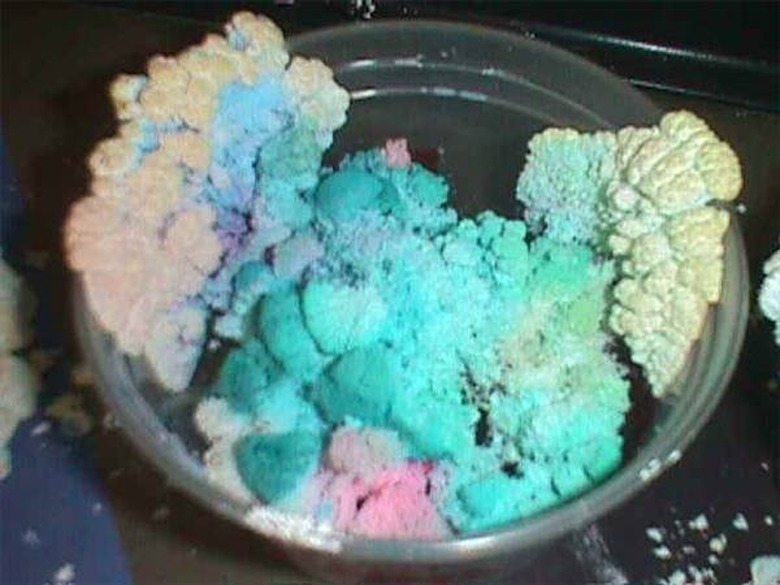How To Grow Crystal "Flowers" From Coal
Growing flowers from coal might sound impossible, but it is actually an easy procedure. Although the so-called flowers are really only crystals, they look like dainty snowflakes and are thus called flowers. In the late 1800s, some coal miners' wives, having access to lots of coal, came up with a way to decorate their homes using flower displays made by a chemical reaction to coal.
Step 1
Combine in a small bowl the salt, bluing, water and ammonia. Bluing can be purchased at most grocery stores in the laundry detergent aisle.
Step 2
Place pieces of broken coal in a shallow glass bowl. Use as many pieces of coal as will fit evenly on the bottom of the bowl.
Step 3
Arrange a variety of other products around and on the coal, such as toothpicks, twigs, string, cloth and paper. The extra products are not mandatory. They are used to create a more diverse design.
Step 4
Pour the mixture from the first bowl over the coal. Crystals will begin to grow and fully form in no more than 8 hours.
Step 5
Add different-colored food coloring to the formed crystals to enhance the beauty of the coal flowers.
Things Needed
- Small bowl
- Shallow glass bowl
- Spoon
- 6 tbsp. salt
- 6 tbsp. liquid bluing
- 6 tbsp. water
- 1 tbsp. ammonia
- Coal
- Twigs
- Toothpicks
- Paper
TL;DR (Too Long; Didn't Read)
The coal has nothing to do with the chemical process that takes place. You can use bricks or stones and obtain the same effect.
Warning
Do not disrupt the procedure. Once the mixture is poured over the coal, put it aside to watch the slow formation of coal flowers.
Cite This Article
MLA
Enderson, Lacy. "How To Grow Crystal "Flowers" From Coal" sciencing.com, https://www.sciencing.com/grow-flowers-coal-4926807/. 24 April 2017.
APA
Enderson, Lacy. (2017, April 24). How To Grow Crystal "Flowers" From Coal. sciencing.com. Retrieved from https://www.sciencing.com/grow-flowers-coal-4926807/
Chicago
Enderson, Lacy. How To Grow Crystal "Flowers" From Coal last modified August 30, 2022. https://www.sciencing.com/grow-flowers-coal-4926807/
